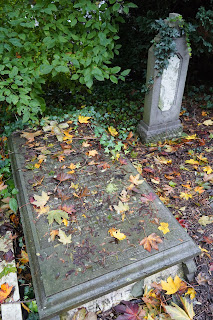In the middle ages rich people were buried in the floor of churches and the others in surrounding cemeteries in the city. In Delft, national hero William of Orange was buried in a crypt of the Nieuwe Kerk in 1584. Since then, this cellar has served as the final resting place for members of the Dutch royal family.
The nieuwe kerk in Delft, the site of the graves of the Dutch Royal family. It can be assumed that the lawn around the church accommodated the graves of the less affluent
However, on August 22, 1827 King William I decided that places with more than a thousand inhabitants should build a cemetery outside the built-up areas for hygienic reasons. Consequently, Delft established a first municipal cemetery in what is now "Kalverbos". When this cemetery became full in 1869, the Jaffa cemetery in the Wippolder was put into use. In 1969 followed a new cemetery in De Iepenhof. Delft also has a small Jewish cemetery on Vondelstraat/Geertruyt van Oostenstraat.
The Kalverbos cemetery still contains the grave of Naundorff'. He contended to be the son, the dauphin, of the French king Louis XVI who was executed in the French revolution. Meanwhile it is know that he was not Louis' son.
The law of 1827 allowed private individuals to build their own cemetery. The Roman Catholic churches make use of this and in 1829 the Roman Catholic cemetery at the Kanaalweg was established on the site of a former country estate. The cemetery is located on the Kanaalweg south of the Rijn-Schiekanaal, The land that was purchased, consists of: "vegetable garden and orchard, forest and pond, a driveway with large square planted with oaks and elms, an octagonal garden house, gardener's house and shed. No special new landscaping was realized for the cemetery since the driveway and garden landscaping was retained.
In 1860 the garden house was replaced by a chapel. In the 1960 ies the City of Delft wanted to construct a new bridge for unlimited vehicle access across the Rijn-Schie Canal, the Sebastiaansbrug. The Roman Catholic church had to sell the cemetery to the city of Delft. The part where the bridge was to be built, approximately 1900 m2, had to be cleared. The choir of the neo-Gothic chapel, built in 1869, fell victim to the construction of the bridge. Afterwards the structure of the remaining church was so poor that it was torn down in 1974
496 graves with an average of three bodies per grave were relocated from the area to be cleared to a nrew western part of the cemetery. Others were transferred to the new Iepenhof cemetery. No new graves have been issued since 1969. Only in existing private (family) graves interments can still carried out.
Although the graves of the old eastern part are overgrown, the layout in this part of the cemetery can still be traced back to the map of the cemetery as it was drawn by the municipality of Delft from 1870. This part of the cemetery includes a priest's grave, a fenced plot containing the graves of Augustin nuns and graves of professors of the Technical University, some of which are surrounded through a wrought iron fences.
The bar house was designed in 1861 by P.J. Schouten. Remarkable is a cast iron crucifix with the tombstone for Mgr. J.T. of Brussels († 1871) at the foot. There is also a striking yellow staff house from the 19th century still existing.
Remarkable are the grave markers for Prof. Ch.M. Schols († 1897; design A. Ballieux), the burial vault with cross for P. Kok († 1875) and the cross with bronze portrait reliefs for H. Swarttouw († 1923).
Fortunately the municipality ultimately did not decide to close the cemetery. After you have passed the messy surroundings of residential blocks from the 1970s and parking lots and you have found the button for opening the high entrrance gate, it opens with a creaking sound and you arrive in another world. Immediately you are separated from the noise and hectic life outside the cemetery. The cemetery gives the impression of one silent and forgotten piece.
High trees surround the plot and helping damping the sound of the traffic rushing over the bridge which so much disturbed the peace of those who found their last rest here.
The greenery is unkempt and the overgrow starts to hide the old graves. Many of the grave plates are broken, the standing stones toppled, bronze letters of inscriptions are missing. The bones of the dead under the broken covers feed the grow of trees and scrubs. Now in fall, their colored leaves in turn cover the graves.
None of the numerous tourists to Delft discover this cemetery. There are still occasional burials in family graves. Sometimes a fan puts fresh flowers on the grave of the Bauer family, known for the singer Frans Bauer. It is to hope that the City of Delft maintains this spot of piece so close to the walls of the old city in this morbid, dilapidated state.
Source:

















No comments:
Post a Comment